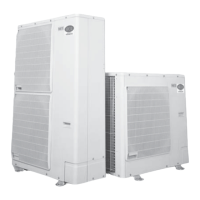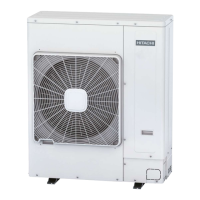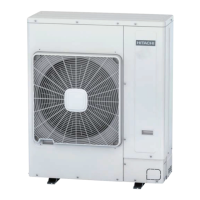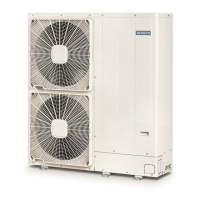22
PMEN0654 rev.0 - 12/2023
5
SUSPENSIONOFREFRIGERANTPIPING
REFRIGERANT PIPING AND REFRIGERANT CHARGE
NOTE
• Do not use insulaon material that contains NH
3
because it can damage cooper pipe material
and can be a source of future leakage.
• Where polyethylene foam insulaon is used, a 10 mm thick layer should be used for the liquid
pipe and between 15 and 20 mm for the gas pipe.
• Insulate the liquid piping completely to avoid a decrease of performance; if not, it will cause
sweang on the surface of the pipe.
• Install the insulaon aer the pipe surface temperature has dropped to the same temperature
as that of the room, otherwise the insulaon may melt.
• Where the er has supplied his own branches, these should be appropriately insulated to avoid
decreases in capacity in line with to environmental condions and dew on the surface of the
piping due to low pressure.
5.6 Suspension of Refrigerant Piping
Suspend the refrigerant piping at certain points and
prevent the refrigerant piping from touching the
weak part of the building such as wall, ceiling, etc…
(If touched, abnormal sound may occur due to the
vibraon of the piping. Pay special aenon in case
of short piping length).
Do not x the refrigerant piping directly with the
metal ngs. (The refrigerant piping may expand
and contract).
Some examples for suspension method are shown
below.
For suspending
heavies
For piping along
the wall
For instant
installaon work
1 ~ 15m
Indoor unit
Points where the
refrigerant pipes
pass through the
dierent structural
parts of the building.
(Fire-Proof secon
treatment)
5.7 Line branch and header branch installaon
Install the distributor supplied by Hitachi on request.
A tee can not be installed instead of a branch pipe.
Fix the branch pipe horizontally to the pillar, wall or ceiling. Piping must not be xed rigidly to the
wall as thermal expansion and contracon can cause pipe fracture.

